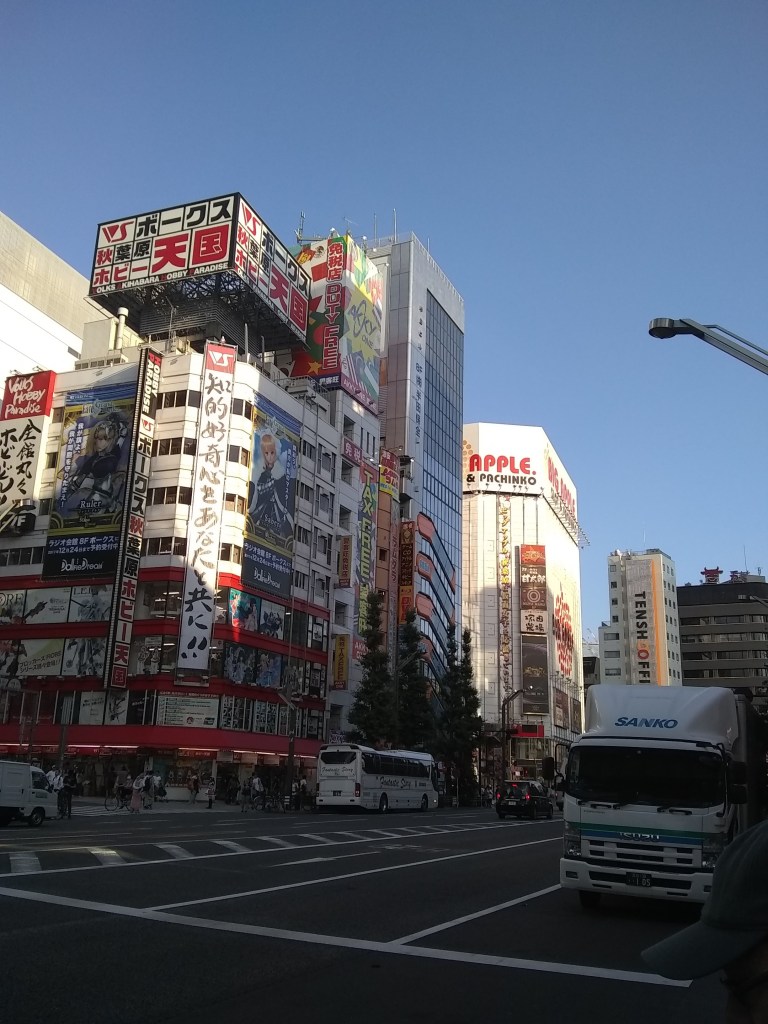I love visiting other cultures and learning what they do differently from the United States. It doesn’t all have to be positive either. It’s just interesting to see what changes when you cross borders. The following are the 10 biggest differences I noticed between Japan and the U.S.
- Everything is cash
Okay, maybe not everything is cash, but a lot of things are. We could always have used our debit/credit cards in an emergency, but Japan is a very cash based society. They pay cash for everything. They also expect it, so no one gets annoyed or impatient as we count out our coins and looked for exact change. It was not only acceptable, it was expected.
- Everyone is polite
I think I said sumimasen (excuse me) and gomen’nasai (I’m sorry) more in Japan than I had ever said in my entire life. Not because I was a bumbling tourist that didn’t speak Japanese (although that certainly contributed) but because that was expected. They also say thank you (arigatogozaimashita) a lot and bow often. It’s just these little ways of showing respect to each other on the day to day, especially in such crowded cities, that I really appreciated.
- No nose blowing
In Japan, it is considered very rude to blow your nose in public. At a curry restaurant and got a drip? Too bad. Either snuffle it or go to the bathroom.
- Vending machines everywhere
When I say everywhere, I really do mean everywhere. They are at stations, along the roads, in alleys. They mostly stock a variety of drinks, including water, coffee, milk, and soda. Many of the machines at the stations also accept Pasmo or Suica cards, which are the cards used to board the subways and trains.

- Tall buildings
When I say tall, I mean tall. The entire country of Japan was built in an upward style fashion. Even their houses were tall and thin. The railway systems were efficient, gliding above the streets below or in tunnels beneath the cities. It is clear they are efficient at packing a lot of people into a small space.

- Hands free bathrooms
Every bathroom I went into was automatic. The sinks, the toilets, the sound machines. Everything was activated with a wave of the hand. For someone like me who has to use a paper towel to turn off the faucet and open the bathroom door, this did not go unnoticed.
- Private bathrooms
Have you ever noticed that in the U.S. our bathrooms are far from private? They leave huge gaps between the doors so you can see if someone is in there. You hear everything that each person is doing. All around our bathrooms are pretty rough. In Japan, that is not the case. I don’t know where the culture comes from and honestly I don’t care. Every stall is private, with a nearly full length stall door that shuts completely. You flip a lock that has an occupancy indicator on it. There are even little sound machines in many of the stalls that you can turn on so you can do your business without the rest of the bathroom hearing. I’ve been in a lot of bathrooms in my time, but Japan’s are by far the best so far.

- No tipping
Taking the risky jump from bathrooms to restaurants, Japan doesn’t tip. They pay their restaurant workers a reasonable wage. The listed price is exactly what you pay. If you leave a tip, they will chase you down on the street to give your money back.
- Ordering in restaurants
This is not the case in all restaurants, but in many of the food places we visited, I noticed increased efficiency. This is because instead of sitting at a table, looking at a menu, and having a server take your order, you walk in the door and select your order off a machine. You pay for it right there and you receive a ticket. This ticket is given to a server and they show you where to sit and bring your food when it is ready.
- Trusting children
I adored seeing the stream of children walking down the street after school. Or the school kids getting on the train. The most intriguing part was that they often were not accompanied by adults. In Japan, they trust their children to get to and from school independently. I’m not talking preschoolers here, but the expectation at a pretty early age is that their children can get around by themselves. I love that autonomy.
Other Japan Blogs:
- 5 Must Eat Foods in Japan
- 8 Things from Japan we should do in the U.S.
- 10 Differences Between Japan and the U.S.
- 12 Things to do in Japan
- The Best and Worst of Japan




